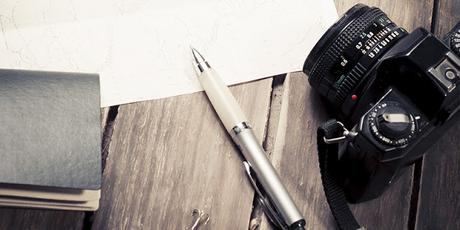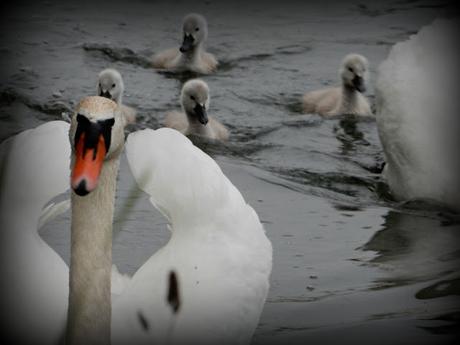
Hello all,
Sorry if you have not see many posts from me in the last month I ended up in A&E on a IV drip due to my chronic Migraines, but I am back and ready to go to tell you what other things I have been up to.
So I enrolled on my first ever Photography course with +Shaw Academy and "yes" have say was a little scared as was not sure what to expect or if I would get the hang of it, but had nothing to loose.
What is it all about......
Photography is a wonderful form of expression and communication. Whether you want to tell a story, sell a product or just show how beautiful a certain place you visited is, photography plays an essential role in fulfilling your creative vision. Photography is a magnificent art form allowing the avid student to draw with light in the most imaginative of forms. Photographers have quite literally brought light to the world and opened our eyes to the imagery from the furthest corners of our planet. The course offers you the opportunity to develop your skills and knowledge and capture those images you have always dreamed of.
Your Tailored Live Online Diploma in Photography
The frustration for budding photographers and even experienced photographers is fulfilling their creative potential due to lack of technical knowledge and understanding of how to take full advantage of their camera. We take students who are stuck on fully automatic and give them the knowledge and skills to make that transition to fully manual shooting. The course provides you with a set of skills to fully utilize the functionality of your camera and help you expand your creative potential. The course also gives you fundamental knowledge about photography so that you have a solid understanding of the subject you are passionate about.
Live Interactive Classes
This course consists of 10 core lessons, building up your Photography knowledge step by step with directly applicable skills and knowledge necessary to produce photographic work. All lessons are presented online live, twice weekly, in a structured manner in order to allow you to learn efficiently. The live aspect of our delivery allows for interactive learning and the questions and answers session will deal effectively with all of your questions to ensure that you are fully understanding of all of the information provided.
Study when or where you please whilst also having full tutor support throughout your journey.
Qualified tutors will support you during each step of your educational journey. In addition to live presentation, all lessons can be accessed 24/7 post their release date so that you can truly learn at your own convenience. This means that even if you can’t attend a live session online, you can catch up on the lesson in your own time. Study when or where you please whilst also having full tutor support throughout your journey, making mastering and implementing this beneficial knowledge easier than ever.
Lesson 1: What is Photography?

Every minute of the day we are exposed to photography and visual imagery in some shape or form, whether it’s an advertising campaign in your local department store or simply looking at pictures of friends and family on a social networking site. This lesson explores photographic styles and how they are used as a form of communication. Photography enables you to convey a message or a story, sell a product, or to simply illustrate how beautiful a certain place you visited is. Therefore the way you shoot and what you capture determines what your photography communicates. Understanding the different styles will help you identify the subjects you like to shoot and enhance your own style.
Camera Types:
We will also dig into the various types of cameras currently available on the market and why you would use one over the other. This will help you with purchasing a camera best tailored for your needs, making shooting in various conditions and situations easier and more enjoyable. Lesson 2: Demystifying Camera Functions:
Most cameras come with a huge range of menus and functions which can be quite daunting for the user to comprehend. In lessons 2, we will look at the common functions that appear on most cameras and demystify their use. Understanding these functions will expand your creative control and open up new possibilities for your pictures.
Lenses Types
The camera’s lens determines the quality and sharpness of your pictures and allows you to get closer or further away from the subject. We will explore the most frequently used lenses and when and where they are used. Picking the right lens for the scene you are capturing will ensure you get the best shot. Lesson 3: Capturing the Light
As technology grows, cameras seem to become more complex by the day with user manuals getting bigger and bigger with each new model. In actual fact cameras are an extremely simple device. The process of capturing and recording light is a reasonably simple process and understanding this process will change the way you think about the complexity of the camera.
Exposure
Understanding the concept of exposure is essential to developing your knowledge of light and will improve your ability to capture the scene the way you see it. We will also discuss different types of light and with the aid of some examples we will analysis various lighting conditions you might find yourself shooting in. Lesson 4: Motion and Depth
Motion and Depth are essential to expanding the creative potential of your photography. Controlling and manipulating motion and depth in your images will allow you to add drama and sophistication to your images. Whether you want to freeze an athlete in action or blur the flow of a waterfall, controlling motion will expand your capabilities and allow you to explore new subjects. Lesson 4 explores the camera’s shutter and aperture and examines the role they play in harnessing this creative potential. Lesson 5: Composition
Composition is one of the most fundamental elements in a photograph. Composition refers to the placement and relationship of elements within a picture. The arrangement of elements in a scene, the angle they are shot at, and the distance the photo is taken from, can completely change the final outcome of the photograph. They can ultimately determine the difference between a good and a bad picture. Understanding how to explore all of the compositional possibilities of the scene will greatly improve your ability to capture the best photographs. Lesson 6: Advanced Composition
In this lesson we will delve deeper in to the subject of composition and look at techniques to guide the viewer’s eye into or around your image. Mastering advanced composition techniques will allow you take pictures that engage the viewer and hold their attention. We will also discuss visual consistency when creating a series of pictures. Lesson 7: How Much Light is Enough?
The ability to capture the light the way you see or would like to see it, is essential to making great photographs that have drama, vivid colours and depth. To fully understand how much light you need to capture for a scene, you need a way of measuring how much light is there. Most cameras have a light meter to indicate whether you have too much, too little or just the right amount of light to capture the scene. Lesson 7 looks at the light meter and discusses how it can be used to understand your exposure even before you have taken the picture. Grasping how to read the light meter will help you avoid taking those pictures that are too bright or too dark. Lesson 8: Manual Mode – The Relationship between Shutter Speed and Aperture.
This is one of the most fundamental topics in photography. The marriage of shutter and aperture in manual mode gives you the most creative control offered to you by the camera. Having an understanding of the relationship between the two, will allow you to expand the potential of your photography and make creative decisions that were not available to you before. Lesson 9: The Colour of Light : White Balance
In this lesson we will look at the different colours of various light sources and how they can change the atmosphere and mood of your photographs. We will also discuss how to avoid and resolve color issues within your pictures.
Focusing
Focus is key for taking high quality photographs that are sharp and capture your vision. Lesson 9 discusses different various techniques and focusing modes available on most cameras. An understanding of focusing will help you keep the viewer engaged with the key subjects in your images.
Lesson 10: The Digital Image
What is a digital picture? Lesson 10 explores file format and how digital images are constructed. This gives you an insight into the file formats available on your camera which equips you with the knowledge to select the highest quality file format and image size that best suits your purpose. We will also look at some image editing software and the key differences between the most popular ones on the market. Imaging software can take your photography to the next level, transforming your pictures into works of art.
No Prior Experience Required - Perfect for Beginners
Discover the Secrets of Photography Professionals
Learn From a Long-Time Industry Professional Photographer
Weekly Assessments Provided to Enable Students to Test Their Knowledge
Photographic Styles
Camera Types
Camera Functions
Vision vs. Camera
Lens Types
How the Camera Works
Controlling Motion with Shutter Speeds
Controlling Depth with Apertures
Compositional Techniques
Compositional Vocabulary
Visual Consistency
The Light Meter
Stops of Light
Exposure Compensation
Fully Manual Mode
Adjusting Aperture and Shutter Speed in Manual Mode
Light metering in Manual Mode
ISO
Colour Temperature/White Balance
Focusing Modes
Resolution
File Format
Image Editing Software Overview
All courses at Shaw Academy are independently accredited by an internationally recognised body for CPD purposes. This course is also accredited by the CPD Certification Service, which is an independent body that ensures qualifications are in line with the most current professional standards.
You might be thinking "that's a lot" it is but as shown its broken down into each individual lesion with each topic, the course started on the 27th of June and now its the 14th of July we have all just done lesion 8.
Have been keen on Photography as my Dad has a very good knowledge on the subject and loves his Cameras, I was never as into it as he was it's only around the last 8 years become more aware and how this piece of tech can be so valuable.
Cameras I own NikonD3100 DSLR + extra lens kits
Nikon Compact Coolpix s9900 x30 ZoomLumix (does not work now )
Home Studio Kit....
Also doing my blog work I use my home Photography studio kit which is so handy and works well for me and my blog posts.
Never during my course did I think that I would be learning about F-Stops and putting them in to practice with my Nikon so far I have learned so much and more to come.
Will keep you all updated if and when I pass fingers crossed!
And will leave you with a few on my images.....




